While you may not notice upon first glance, there are many differences between a smallmouth vs largemouth bass. However, how can you learn to tell these two fish apart when they belong to the same species? There are a few key differences between them- it’s all a matter of size with these two fish!
In this article, we will address the many differences between smallmouth bass and largemouth bass, including their physical appearances and habitat preferences. Not only will you know how to identify these bass on sight, you’ll also know when the best time to fish for them is! Let’s dive in and get started now.
Comparing Smallmouth vs Largemouth Bass
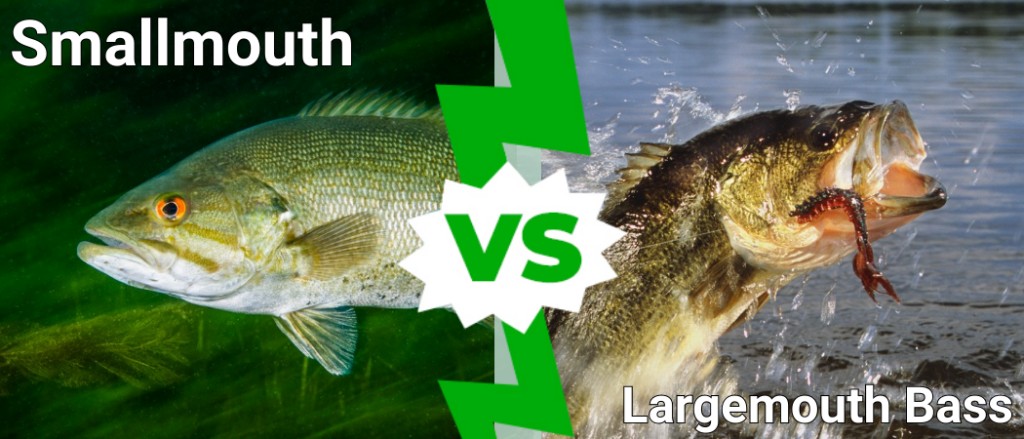
| Smallmouth Bass | Largemouth Bass | |
|---|---|---|
| Size | 10 pounds or less; 10-20 inches long | Over 10 pounds; 15-30 inches long |
| Appearance | Vertical lines on a dark brown to light green body; small and proportioned mouth | Speckled green body with separated dorsal fins; large mouth with big lower jaw and tall upper jaw |
| Location Found | Cooler lakes or rivers | Warmer lakes or rivers |
| Habitat | Often found in open water, chasing fish from covered areas; hunts in fast moving water | Prefers the shallows and cover or sunken trees and murky water; hunts away from fast streams |
| When to Fish | Spring or Fall | Summertime |
Key Differences Between Smallmouth vs Largemouth Bass
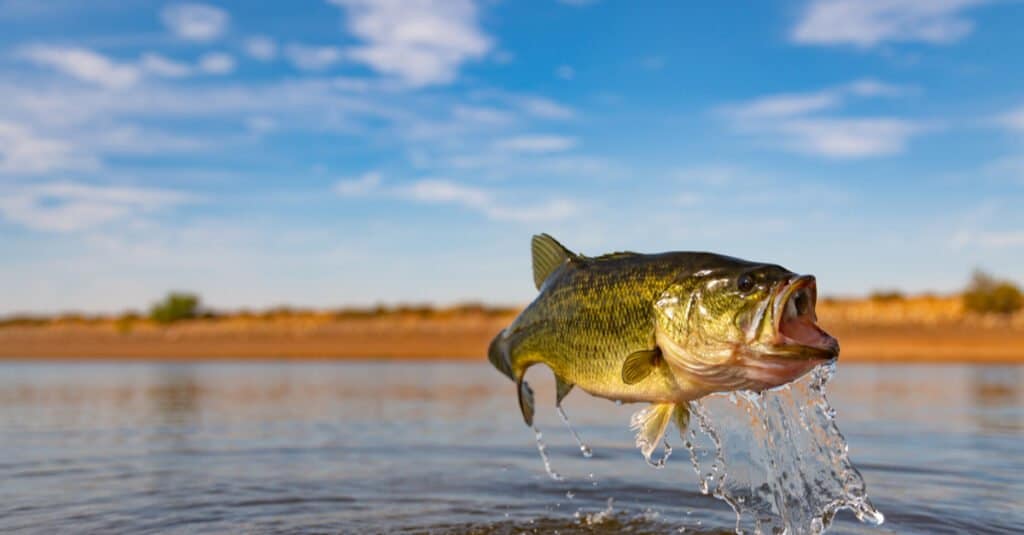
The fishing seasons for both of these fish differ, with smallmouth bass optimally fished for in spring or fall and largemouth bass in the summertime.
©Ryno Botha/Shutterstock.com
There are many differences between smallmouth vs. largemouth bass. Not only do these two fish differ in their sizes, their appearances are slightly different as well. Largemouth bass prefer warmer waters with plenty of cover, while smallmouth bass prefer cooler waters with plenty of open area for hunting. Finally, the fishing seasons for both of these fish differ, with smallmouth bass optimally fished for in spring or fall and largemouth bass in the summertime.
Let’s discuss some of these differences in more detail now.
Smallmouth vs Largemouth Bass: Size
An obvious difference between smallmouth vs largemouth bass lies in their size. While these fish can grow closer to 15 inches on average, smallmouth bass are always smaller than largemouth bass. This number can vary, but most of the weight and length of smallmouth bass ends up being smaller than largemouth bass.
For example, the average smallmouth bass grows up to 10 pounds or less, while largemouth bass often exceed 10 pounds if not 20. Largemouth bass also grow an average of 15 to 30 inches long, while smallmouth bass average 10 to 20 inches.
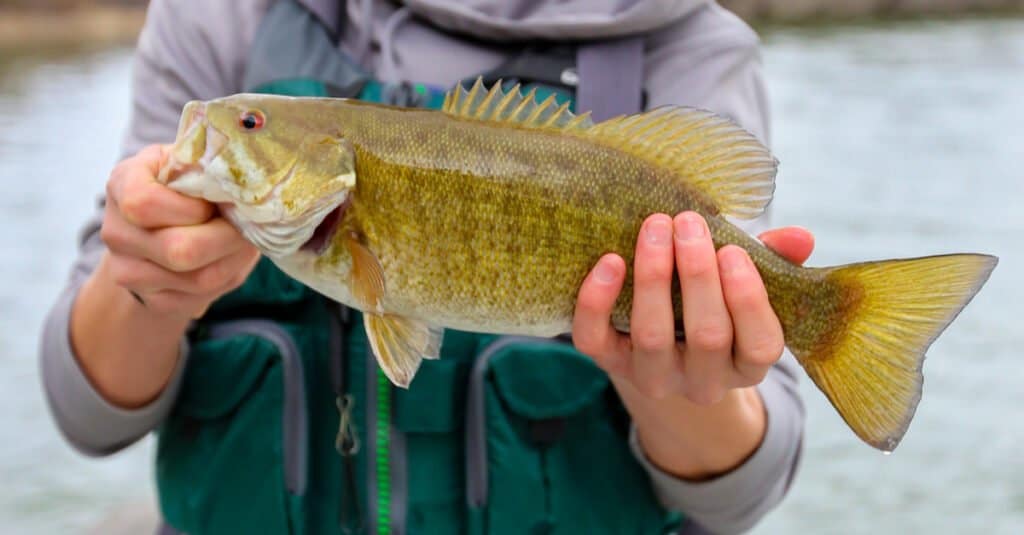
The average smallmouth bass grows up to 10 pounds or less, while largemouth bass often exceed 10 pounds if not 20.
©CSNafzger/Shutterstock.com
Smallmouth vs Largemouth Bass: Appearance
Another difference between a smallmouth vs largemouth bass lies in their overall appearance. Smallmouth bass are often found in a light brown shade, with vertical stripes on the sides of their bellies. Largemouth bass are typically green, with speckles and separated dorsal fins along the top of their body. Smallmouth bass have connected dorsal fins, a direct difference when compared to largemouth bass.
In case you hadn’t already guessed it, a primary physical difference between these two fish is their mouth sizes. Smallmouth bass have a well-proportioned mouth in comparison with their head, while largemouth bass have an extremely large mouth. Their jaws extend above their eyeline and well below their body, while smallmouth bass have a mouth that remains proportional to their head.
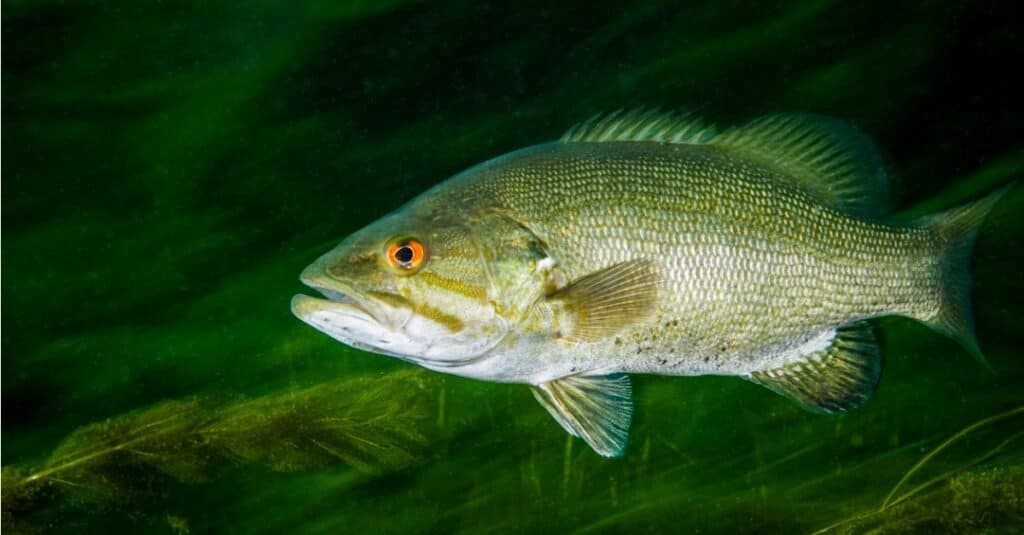
Smallmouth bass have connected dorsal fins, a direct difference when compared to largemouth bass.
©iStock.com/RLSPHOTO
Smallmouth vs Largemouth Bass: Location Found
While Smallmouth and largemouth bass can exist in the same locations, they do differ in terms of their preferences. Largemouth bass prefer warm lakes and rivers while smallmouth bass prefer colder freshwater areas. However, depending on the season, you can fish for smallmouth and largemouth bass in the same session.
Smallmouth vs Largemouth Bass: Habitat Preferences and Hunting Style
Another difference between a smallmouth vs largemouth bass is their preferred habitats as well as their hunting styles. While both of these fish are carnivorous, they utilize very different hunting habits in order to achieve their goals. Let’s talk more about this in detail now.
Smallmouth bass lure prey away from the sheltered areas into open water in order to hunt and kill them, while largemouth bass live and eat in sheltered locations. Largemouth bass avoid fast-moving water in general, preferring sheltered and murky shallow water. This is different from smallmouth bass in just about every way, as they prefer open water that is clear and fast-moving.
It is interesting to note that largemouth bass enjoy the relative cover of sunken trees, grasses, and rocks, but smallmouth bass don’t. However, you may still be able to fish for smallmouth bass near locations better protected, as this is where they hunt for their food. Many anglers have better luck catching smallmouth bass in fast-moving open water though, especially during cooler seasons.
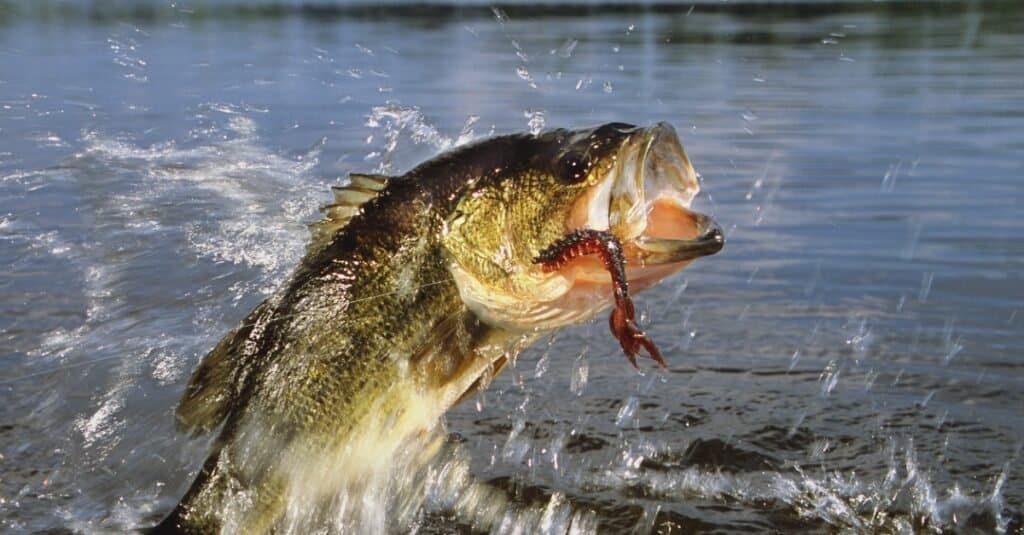
Smallmouth bass lure prey away from the sheltered areas into open water in order to hunt and kill them, while largemouth bass live and eat in sheltered locations.
©iStock.com/stammphoto
Smallmouth vs Largemouth Bass: When to Fish for Them
A final difference between Smallmouth vs largemouth bass is when you can fish for them. Whether or not you are an angler, knowing when these fish are out and about is important. Smallmouth bass are best fished during milder months, such as spring and fall seasons, while largemouth bass are ideally caught in the summertime.
Largemouth bass seem to prefer warmer waters overall, given that they are often found in shallow water. Smallmouth bass differ in this way given that they are typically found in fast-moving and deeper water. It is extremely rare to find smallmouth bass during warm and late summer months.
The photo featured at the top of this post is © Ryno Botha/Shutterstock.com
Thank you for reading! Have some feedback for us? Contact the AZ Animals editorial team.






